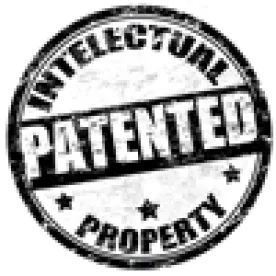Decision Date: November 18, 2014
Court: District of Massachusetts
Patent: D677,423
Holding: Plaintiff’s proposed claim construction ADOPTED
Opinion:
Plaintiff Maureen Reddy sued Defendants Lowe’s Companies, Inc. and Evolution Lighting, LLC for infringement of U.S. Design Patent No. D677,423 (“the ’423 patent”), entitled “Bathroom Vanity Light Shade.” The court held a Markman hearing on June 4, 2014 to construe the claims in response to the parties’ claim construction briefs. Reddy advocated for simply construing the claims as “[t]he ornamental design for a bathroom vanity light shade, as shown and described in Figures 1-5.” In contrast, Lowe’s proposed a more detailed claim construction:
A light shade adapted to fit over an existing wall light fixture having (i) a front rectangular surface in the form of a flat plane comprising a fabric surface, (ii) substantially square side surfaces in the form of flat planes comprising fabric surfaces, (iii) a flat rectangular bottom surface comprising an acrylic diffuser, and (iv) having opening top and back surfaces with a metal rod extending between the upper rear corners of the side surfaces, wherein all corners are right angles and all edges are straight and are either vertical or horizontal.
To resolve the claim construction dispute, the court first noted the unique aspects of design patents. Design patents focus on the drawings instead of the text and ordinarily do not require a written description other than a reference to the drawings. Moreover, because design patents claim the ornamental design “as shown and described,” the drawings establish the metes and bounds of the design patent. Finally, design patent drawings are subject to stringent technical requirements.
The court then analyzed the framework for design patent claim construction. In Egyptian Goddess, Inc. v. Swisa, Inc., the Federal Circuit acknowledged that a district court has discretion to construe the design patent claims but is not obligated to give a detailed verbal description of the design. 543 F.3d 665, 679 (Fed. Cir. 2008) (en banc). The Federal Circuit warned that such a description entails risks, such as placing undue emphasis on particular features and causing the fact finder to focus on these particular features rather than the design as a whole. Id. at 680. Since Egyptian Goddess, courts have generally avoided detailed verbal claim constructions, except in limited circumstances.
With that background, the court turned to construing the claim of the ’423 patent and adopted Reddy’s proposed construction because it is “a simpler interpretation of the patent that accords more closely with the types of constructions adopted by post-Egyptian Goddess courts.” The court also addressed several arguments that Lowe’s raised in support of its construction, none of which prevailed.
First, Lowe’s argued that certain language in the ’423 patent required the court to adopt their construction either because all words in a patent must be given effect or because certain materials mentioned in the ’423 patent are protected “surface treatment” elements of the design. In addition to the single claim and brief description of the five figures, the ’423 patent contains a general description of the bathroom vanity light shade indicating that it is “an ornamental fixture consisting of a rectangular, metal rod skeleton, wrapped in fabric on three sides (front side, left side, right side), with a stationary acrylic diffuser bottom” that “mounts on the wall with a top/ back exposed mounting rod.”
Lowe’s relied heavily on the claim language “as described,” arguing that this language would be superfluous if the general description of the bathroom vanity light shade did not constitute part of the claim scope. But the court rejected this assertion because of a design patent axiom that “it is the drawings of the design patent that provide the description of the invention.” In re Daniels, 144 F.3d 1452, 1456 (Fed. Cir. 1998). According to the court, the references to the light shade being “wrapped in fabric” and having an “acrylic diffuser bottom” are not part of the patent scope because they are not shown in the drawings. The court held that both the relevant case law and the United States Patent and Trademark Office regulations suggest that courts should give effect to features in a written description only when they clarify features on an existing drawing figure.
The argument that the fabric covering and acrylic diffuser bottom are surface treatment elements of the design also failed. Although the MPEP states that material can be protected as part of a surface treatment, the court noted that, read in context, material does not mean the foundational material, but rather the use of material to create a visual design. Moreover, the MPEP requires the surface treatment to be shown in full or broken lines. Neither of these features is shown in the drawings of the ’423 patent.
Finally, Lowe’s argued that the court should consider the prosecution history and the prior art in construing the claims. But the court declined to do so. The court explained that the discussion of prior art is undeveloped because Lowe’s mentioned three other U.S. patents, none of which were design patents, but did not focus on the overall design in comparing the prior art. Although the prosecution history discussion was more developed, it was ambiguous and risked placing emphasis on certain elements of the design, contrary to the teachings of Egyptian Goddess.
Because Reddy’s claim construction was more appropriate under Egyptian Goddess and because the court rejected all arguments in favor of Lowe’s, the court adopted Reddy’s claim construction as “[t]he ornamental design for a bathroom vanity light shade, as shown and described in Figures 1-5.” On November 25, 2014, Lowe’s filed a petition with the Patent Trial and Appeal Board seeking inter partes review of the ’423 patent.





 />i
/>i

